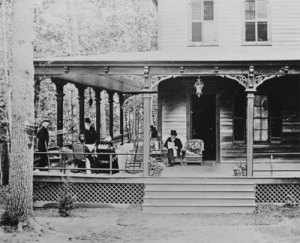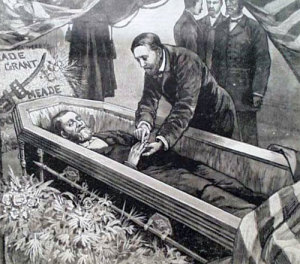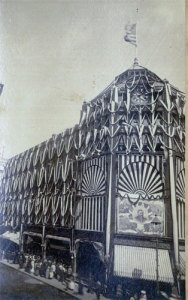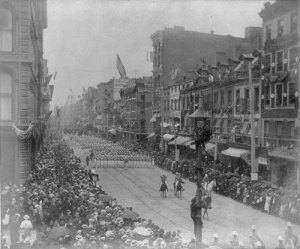American flags prominent in Grant’s funeral

On July 23, 1885, Ulysses S. Grant died in a small cottage atop Mount McGregor in upstate New York. He had gone there to complete his memoirs as cancer ravaged him. He succeeded, just as he had in winning the Civil War two decades earlier. In both victories, American flags played major roles.
When word of Grant’s passing reached Americans 130 years ago, a nation mourned for many days, as it had in 1865, when President Abraham Lincoln was murdered. This time, as word spread across the continent, another president became the focus of wide-spread sorrow.

After Grant’s body was laid out on a small bed in the cabin, The New York Times reported that “the canopy, still draped in the American flag, remains over the body.” A flag would travel with the ex-president until his burial in New York City many days later.
In Washington, D.C., President Grover Cleveland “immediately directed that the flag on the White House should be placed at half staff,” reported papers across America. “The lowering of the flag was the first intimation that the citizens of Washington had of the death of the distinguished man.”
Cleveland’s proclamation declared: “In testimony of respect to the memory of General Grant, it is ordered that the Executive Mansion and the several Departments at Washington be draped in mourning for a period of thirty days and that all public business shall on the day of the funeral be suspended.”

In imitation of the White House, a newspaper article continued, flags “on many private ones, were placed in like position….The citizens began draping their homes with mourning.” Flags on public buildings and on houses followed suit throughout the nation.
However, not everyone mourned Grant’s death. In the South, anger still existed among many Confederates. In Chattanooga, Tennessee, for example, an American flag that was lowered to honor the ex-general, “was torn down by unknown persons,” a newspaper notice said. The local postmaster “replaced the flag [and] threatened to kill any man touching it.”
Just as Lincoln’s body had been taken by train across the U.S. to return him to Illinois for interment, Grant’s remains were placed on a train and moved south to New York City. Throughout the journey, an American flag remained atop his coffin.

The Grant funeral procession, which did not begin until August 8, was an impressive sight, with mourners marching in a seven-mile-long demonstration of their tribulation. Two Union and two Confederate generals were among the pall-bearers, reflective of the great respect Grant had earned as a warrior, president and man.
The night before the cortege, another group of sorrowing people demonstrated their special feelings for Grant. As reported in The Times, “a memorial mass meeting, in which the entire local colored population was well represented, was held…at the Bethel African Methodist Episcopal Church….The walls and galleries…were heavily draped with black and a catafalque rested on the pulpit. It was decorated with a portrait of Gen. Grant.”
A memorial address reminded all that “the broken chains at the feet of the slaves are…mute witnesses of his victory” in the Civil War.
